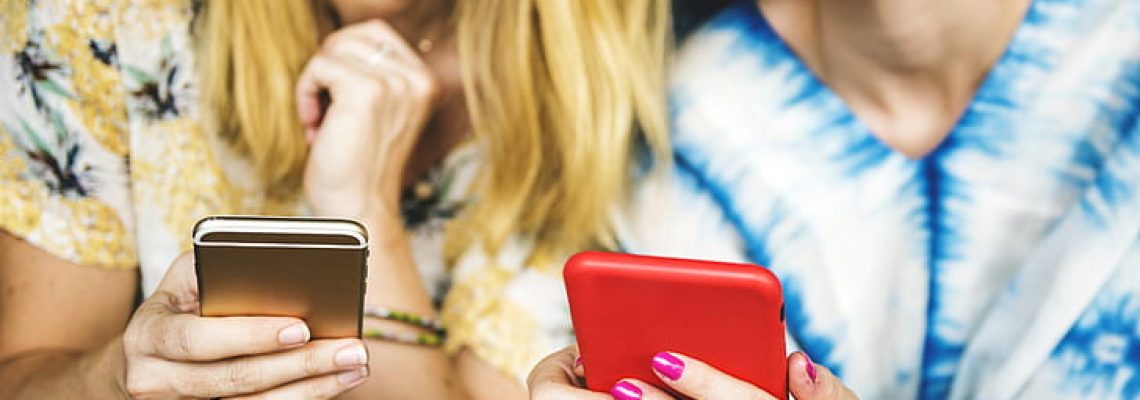Scrolling, browsing, tagging, posting…every day is consumed with social media activity for many of us. With the worldwide pandemic resulting in lockdown and isolation for millions of people of all ages, a new appreciation for technology was felt (what ever would we have done twenty years ago?!) and for some a steep learning curve in online communication embarked upon.
This isolation was felt acutely by young people who found themselves segregated from their friends and peers, often left at home for hours to navigate online schooling alone. The internet meant they could be alone but not unconnected. Social media was relied on more than ever before, to communicate with their friends, support each other, share photos and videos. Hours were spent creating dance and singing videos and all sorts of fun things to keep themselves occupied and connected, all of which are so beneficial to their mental health.
As well as friends and peers, most young people follow celebrities and vloggers from around the world. With so much time spent viewing these influencers with their filtered and photoshopped faces and bodies, it would be impossible not to compare their own lives and bodies to those that they are following online. As a result, for many young people they are constantly (often on a daily basis) comparing their own bodies, hair, clothes and lifestyles with these influencers’ edited lives. These influencers who often have stylists, make-up artists, filtered lighting, surgical procedures, and more money and means than the average teenager. They are often paid to wear or use certain products by companies wishing to advertise their brand. Like is not being compared with like. The questions must at least be asked: – what is this doing to young people’s self-esteem? To their body image? To their mood and emotions? For individuals, this impact varies considerably. For some who are self-confident and resilient, the impact is minimal, for others it can be devastating.
While internet or e-safety has been well rehearsed in recent years, as well as the effects of screen time which includes watching T.V. and using websites, the impact that social media use has on the mental health of young people has been less well explored. However, some research has been carried out in this area and the results might surprise you!
While some studies found that using social media has had a positive impact on adolescent wellbeing in terms of feelings of happiness (Dogan, 2016); life satisfaction (Ferguson et al., 2014) and positive mood (Apaolaza, He and Hartmann, 2014). Other studies have found that more use of social media has resulted in lower self-esteem (Blomfield Neira and Barber, 2014); poorer body image (de Vries et al., 2016) and sleep deprivation (Woods and Scott, 2016). A systematic review of 24 studies investigating the relationship between social media use and the subjective wellbeing of young people resulted in nine studies which found social media has a positive influence on young people and fifteen studies which found it has a negative impact (Webster, Dunne and Hunter, 2020).
Although the results of the research are mixed, most people agree that education is needed to raise awareness of the impact that social media can have on the mental health of young people. By teaching young people about concepts such as filtered images, fake news, and digital footprint, they will be more aware of how other people use social media. By encouraging them to be kind online, how to deal with trolls and explaining the benefits of taking a digital detox and switching off at night-time, young people will be in a better position to enjoy using social media while protecting their mental health.
References
Apaolaza, V., He, J. and Hartmann, P. (2014) ‘The effect of gratifications derived from use of the social networking site Qzone on Chinese adolescents’ positive mood’, Computers in Human Behavior, 41, pp. 203–211. doi: 10.1016/j.chb.2014.09.029.
Blomfield Neira, C. J. and Barber, B. L. (2014) ‘Social networking site use: Linked to adolescents’ social self-concept, self-esteem, and depressed mood’, Australian Journal of Psychology, 66(1), pp. 56–64. doi: 10.1111/ajpy.12034.
Dogan, U. (2016) ‘Effects of Social Network Use on Happiness, Psychological Well-being, and Life Satisfaction of High School Students: Case of Facebook and Twitter’, Egitim ve Bilim-Education and Science.
Ferguson, C. J. et al. (2014) ‘Concurrent and Prospective Analyses of Peer, Television and Social Media Influences on Body Dissatisfaction, Eating Disorder Symptoms and Life Satisfaction in Adolescent Girls’, Journal of Youth and Adolescence, 43(1), pp. 1–14. doi: 10.1007/s10964-012-9898-9.
de Vries, D. A. et al. (2016) ‘Adolescents’ Social Network Site Use, Peer Appearance-Related Feedback, and Body Dissatisfaction: Testing a Mediation Model’, Journal of Youth and Adolescence. New York: Springer Science & Business Media, 45(1), pp. 211–224. doi: http://dx.doi.org/10.1007/s10964-015-0266-4.
Webster, D., Dunne, L. and Hunter, R. (2020) ‘Association Between Social Networks and Subjective Well-Being in Adolescents: A Systematic Review’, Youth and Society. doi: 10.1177/0044118X20919589.
Woods, H. C. and Scott, H. (2016) ‘#Sleepyteens: Social media use in adolescence is associated with poor sleep quality, anxiety, depression and low self-esteem’, Journal of Adolescence, 51, pp. 41–49. doi: 10.1016/j.adolescence.2016.05.008.


